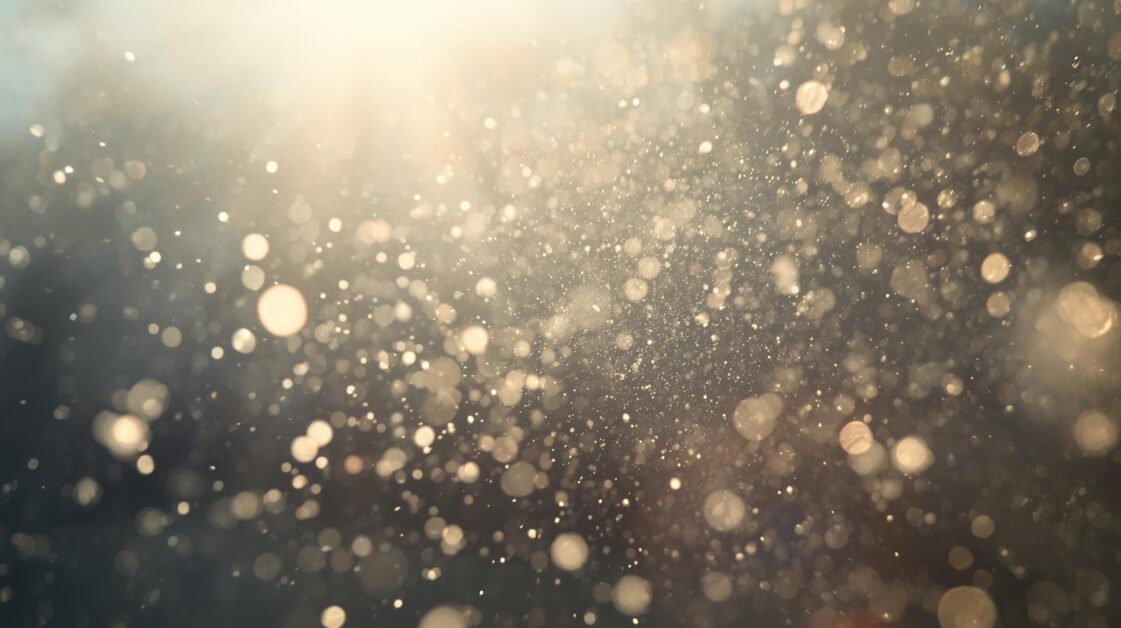
Hachoooo! Dust is in the air! It’s hard to totally eliminate from your house especially in Southern California. Most days are so nice we want the windows cracked to let in that swee socal breeze. The only problem is, dust is one of those silent intruders that sneaks into every home. No matter how often you clean, it always seems to find its way back onto surfaces, carpets, and furniture. For many homeowners in Thousand Oaks, the bigger concern isn’t how dust looks — it’s how it affects their health. Sneezing, itchy eyes, and constant congestion are all signs that dust might be more than just an annoyance.
So what exactly is in dust, why does it trigger allergies, and how can you reduce its impact on your home?
What Dust Really Is
Dust isn’t just dirt. It’s a mix of microscopic particles: dead skin cells, pollen, pet dander, mold spores, and even fibers from clothing and furniture. Together, these particles create the fine layer you see settling on your shelves and electronics. For people with sensitivities, this cocktail of allergens can easily irritate the respiratory system.
Why Dust Worsens Allergies
Dust mites are one of the biggest culprits. These tiny organisms thrive in warm, humid environments and feed on skin flakes. Their droppings are highly allergenic and often trigger sneezing, coughing, and other allergy symptoms. Add pollen and mold spores into the mix, and it’s no wonder that indoor dust can be as bothersome as outdoor allergens.
For the regular house cleaning services in Thousand Oaks, where seasonal pollen is common, homes often experience higher levels of allergen buildup. This means dusting and air quality control are critical for keeping symptoms under control.
Daily and Weekly Dust Control
-
Vacuum Smartly: Use a vacuum with a HEPA filter to trap fine particles that regular vacuums recirculate into the air. Carpets, rugs, and upholstered furniture should be vacuumed at least twice a week.
-
Dust with Intention: Dry dusting often spreads particles into the air. Instead, use a slightly damp microfiber cloth to trap dust.
-
Don’t Forget the Hidden Spots: Baseboards, ceiling fans, blinds, and behind furniture are prime dust collectors that often get overlooked.
-
Wash Bedding Often: Dust mites thrive in sheets and pillowcases. Weekly washing in hot water helps keep them in check.
Seasonal Deep Cleaning
While daily habits reduce surface buildup, seasonal deep cleaning makes the biggest difference. Dust tends to hide in places you rarely see, such as air vents, under large furniture, and behind appliances. A more thorough cleaning session every few months ensures allergens don’t accumulate to unhealthy levels.
Professional house cleaning services in Thousand Oaks often include detailed dusting as part of their packages, helping homeowners who want to eliminate hidden allergens without the hassle of doing it themselves.
Improving Air Quality
Reducing dust isn’t just about wiping surfaces — it’s about what you breathe. Air purifiers with HEPA filters, regular HVAC filter changes, and keeping windows closed during high-pollen days all help minimize dust and allergen circulation.
Simple adjustments like placing entryway mats at doors and having family members remove shoes indoors also prevent outdoor debris from becoming indoor dust.
When to Call in the Experts
Sometimes, no matter how often you dust, it feels like a losing battle. That’s when a professional cleaning service can make a difference. Marching Maids provides detailed dusting services that target overlooked areas, reduce allergen buildup, and leave your home feeling lighter and fresher. Whether it’s a one-time deep cleaning or ongoing maintenance, letting professionals handle the dust can mean fewer allergy flare-ups and a healthier environment.